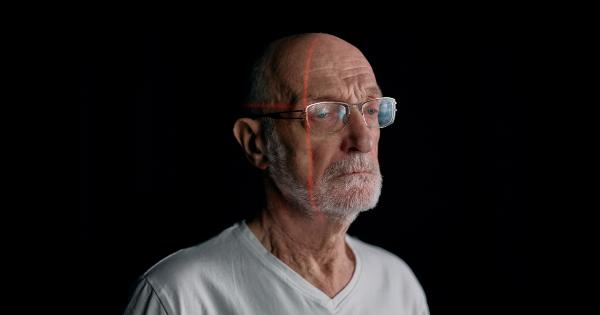Laser waxing is a popular hair removal method that offers long-lasting results. It uses laser technology to target the hair follicles and prevent hair growth.
This technique has gained popularity among people of all ages, but is there an age limit for laser waxing? In this guide, we will explore the age limits for laser waxing and provide you with all the information you need to know.
What is Laser Waxing?
Laser waxing, also known as laser hair removal, is a cosmetic procedure that uses a concentrated beam of light to remove unwanted hair. The laser targets the pigments in the hair follicles, damaging them and inhibiting hair growth.
This method offers a permanent reduction in hair growth over time.
Is Laser Waxing Safe for All Ages?
While laser waxing is generally safe for most people, there can be age restrictions depending on various factors. The FDA has approved laser hair removal for adults, but the age limit may vary from clinic to clinic.
It is essential to consult with a qualified professional to determine if laser waxing is suitable for you or your child.
Age Limits for Laser Waxing
1. Adolescents: Most clinics recommend waiting until the age of 14-16 to start laser waxing. This is because the body undergoes hormonal changes during puberty, which can affect hair growth patterns.
Waiting until the hormonal changes stabilize ensures better and more effective results from laser waxing.
2. Young Adults: Once a person reaches the age of 18, laser waxing is generally considered safe and suitable. At this age, the body has undergone most of its physical development, and hair growth patterns have become more consistent.
3. Adults: Laser waxing is commonly performed on adults with no upper age limit.
As long as a person is in good health and does not have any underlying medical conditions that may contraindicate laser hair removal, they can benefit from this hair removal method.
It is important to note that these age limits are not set in stone and can vary depending on the individual’s circumstances. Always consult with a professional to determine the appropriate age for laser waxing.
Factors to Consider
Several factors influence the age at which laser waxing is appropriate. These factors include:.
1. Hormonal Changes: Hormonal changes during puberty can significantly impact hair growth patterns. It is advisable to wait until these changes stabilize before considering laser waxing.
2. Skin Sensitivity: Younger individuals may have more sensitive skin, which can increase the risk of adverse side effects from laser waxing. It is essential to assess skin sensitivity before undergoing the procedure.
3. Hair Color and Texture: The effectiveness of laser waxing varies depending on hair color and texture. Lighter hair colors and finer hair may require more sessions for optimal results.
Risks and Side Effects
Like any cosmetic procedure, laser waxing carries some risks and side effects. These may include:.
1. Skin Irritation: Some individuals may experience redness, itching, or swelling in the treated area. These symptoms are usually temporary and subside within a few days.
2. Pigmentation Changes: Laser waxing can cause temporary or permanent changes in skin pigmentation. This is more common in individuals with darker skin tones.
3. Sun Sensitivity: After laser waxing, the treated area may become more sensitive to sunlight. It is crucial to protect the skin from direct sun exposure and use sunscreen with a high SPF.
It is essential to discuss these risks and side effects with a qualified professional before undergoing laser waxing.
Preparing for Laser Waxing
Prior to laser waxing, it is necessary to follow some preparation guidelines:.
1. Avoid Sun Exposure: It is advisable to avoid direct sun exposure and tanning beds for at least two weeks before the procedure as it can increase the risk of complications.
2. Shave the Treatment Area: The area to be treated should be clean-shaven before the laser waxing session. This ensures optimal targeting of hair follicles.
3. Avoid Other Hair Removal Methods: Avoid waxing, plucking, or using hair removal creams in the weeks leading up to laser waxing. These methods can interfere with the laser’s effectiveness.
4. Consultation and Patch Test: Before undergoing laser waxing, schedule a consultation with a professional to discuss your medical history, assess your suitability for the procedure, and perform a patch test to check for any adverse reactions.
Aftercare Tips
After laser waxing, it is important to follow these aftercare tips for optimal results:.
1. Avoid Sun Exposure: Direct sun exposure should be avoided for at least two weeks after the procedure to prevent pigmentation changes and sensitivity.
2. Use Sunscreen: Apply a broad-spectrum sunscreen with a high SPF to the treated area whenever it is exposed to the sun.
3. Moisturize: Keep the treated area moisturized to promote healing and prevent dryness or irritation.
4. Avoid Hot Baths or Showers: Hot water can increase skin sensitivity. Stick to lukewarm water when bathing or showering.
5. Avoid Excessive Sweating: Activities that cause excessive sweating, such as vigorous exercise or saunas, should be avoided for a few days post-treatment.
Conclusion
Laser waxing offers a long-term solution for unwanted hair, but age limits should be considered to ensure safety and effectiveness.
While there are recommended age limits for laser waxing, individual circumstances and professional advice play a crucial role. Always consult with a qualified professional to determine the appropriate age for laser waxing. Following proper preparation and aftercare guidelines can help you achieve the best results.































